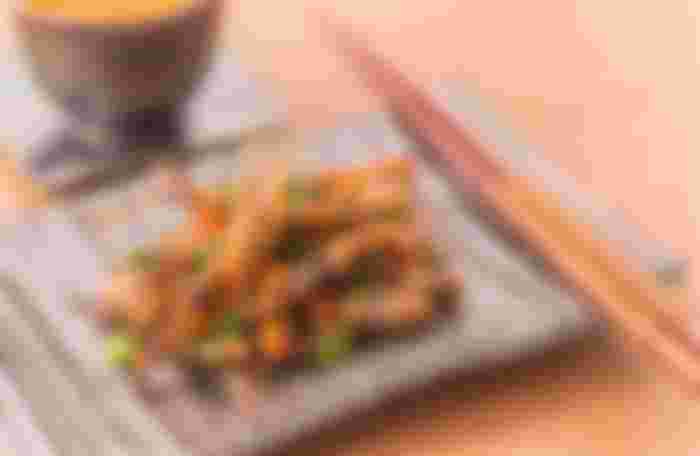
Insects are 'a wasted resource' as they are an important and easily accessible source of nutritious and protein rich food.
"Eating insects" was an original campaign launched by the Food and Agriculture Organization of the United Nations (FAO), in 2013, after discovering through an important study that insects are nutritious, various, inexpensive and even delicious.
Many are stopped by their appearance, but if you have wondered why eating insects is nutritious and good for people's health? Keep reading and you will be amazed at what these beings can do for your body.
Insects benefits
1. They help preserve the planet's resources
Concern for the future of the planet drives, according to Dea, the interest in "finding new sources of food with minimal expenditure of resources." In this field, the efficiency of insects is unquestionable, since to obtain 1kg of edible insects it is enough to use 2kg of food, while to obtain 1kg of meat 8kg of food is required. In addition, "insects can feed on food or human waste," says the expert.
De Lamo adds that it is very possible that, in the future, more than a fad, insects will be a necessity: “It is calculated that by 2050 the protein requirements will be 50 percent higher than the current ones and the system we have for obtaining protein will not be enough to meet this new demand. " Insects would be another alternative, which would be added to other protein sources, such as algae or so-called clean meat (artificial or cultured meat).
Another of the objectives related to sustainability is the improvement of animal nutrition. In fact, the professor comments that "studies have been done with Atlantic salmon, partially feeding it with extracts of larvae of the black fly."
2. They have a high nutritional value
Insects are rich in protein, fat (especially polyunsaturated omega 3, 6, and 9) and micronutrients such as iron, calcium, magnesium, phosphorous, manganese, selenium, and zinc. "Insects provide high-quality protein and nutrients compared to meat and fish," says Dea. "They are also rich in fiber, so they improve intestinal transit."
Regarding proteins, he stresses that "the average protein content is 50 percent, much higher than that of traditional slaughter animals". Pork has 16.6 percent protein, beef 21 percent, lamb 15.6 percent, and chicken 19.9 percent. He also notes that "the quality of insect proteins is similar in terms of the supply of amino acids to soy protein."
Differences in iron content are also seen. Thus, for example, it is calculated that mopana caterpillars can have from 37 to 77 mg of iron per 100 g of dry product, while the amount in beef is about 6 mg per 100 g of dry product.
It must be taken into account that the nutritional composition will vary according to the species of insect and also depending on the metamorphic phase of consumption. “The insects go through different metamorphic phases; for example, from the mealworm, Tenebrio molitor, we eat its adult larvae, but to obtain them we need female and male beetles. The females lay the eggs from which the larvae hatch and, once they are adults, they become pupae and these, in turn, become beetles ”, explains De Lamo.
3. They have great gastronomic versatility
There are more than 1,900 edible species of crickets, ants, grasshoppers, beetles, termites, caterpillars ... In many countries they are eaten whole or ground (in powder or paste form) and can be incorporated into other foods. Dea emphasizes the need to cook them well, but the way of doing it can vary: "Fried, stewed, cooked, stewed, boiled or roasted".
De Lamo says that whole insects can be found "thermally treated and seasoned with spices for consumption directly as snacks -as if they were nuts or vegetable chips- and can be put as ingredients of different culinary preparations, such as salads or pizzas".
Flours, mainly cricket, grasshopper, mealworm, and Buffalo worm, can also be purchased at online stores and some supermarkets. "It is important to mention that they do not behave technologically like cereal flours," adds the UOC expert.
4. Your health risks are minimal
"In general, insects have fewer health risks than other foods," says Dea, who summarizes the possible dangers in three: that contain antinutrients such as oxalates, phytates or tannins; that have allergens and that have traces of pesticides.
De Lamo adds that "in principle, the insects that are consumed in Europe (larvae, crickets and grasshoppers) do not have pathogenic microorganisms or viruses that can affect humans." In this sense, the key question to be answered is whether, if they were contaminated with human pathogens such as Salmonella, they could transmit them. The expert clarifies that "all this is being investigated because insect farms are going to be created." There is also concern that insects may accumulate heavy metals.
In any case, Dea considers that they are suitable for all ages and "are especially indicated for children to complete nutritionally deficient diets."
Regarding the creation of farms, the professor at the CEU University considers that the breeding of insects "can generate business opportunities in both developing and developed countries."

Yes. Some insects are palatable. I am not talking about grasshoppers and cockroaches. I learned some people eat them in Asia. This is one of the causes of the ubiquitous nature of the disease causing pathogens in Asia.